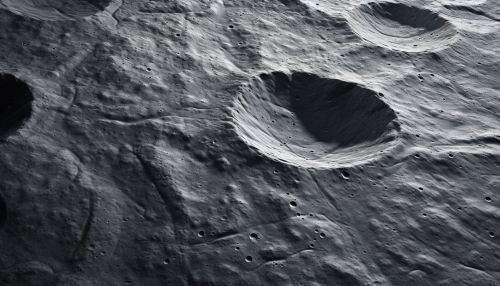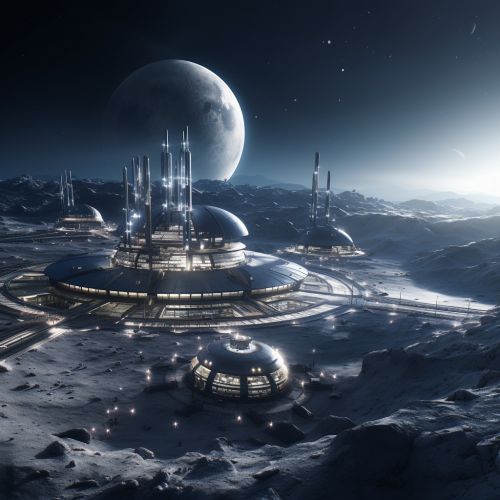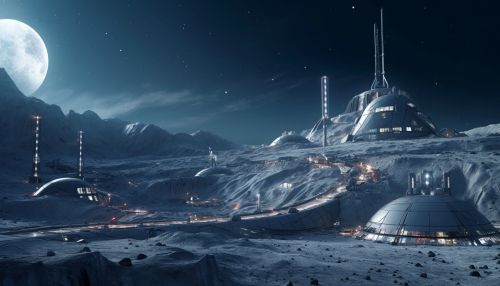Lunar regolith
Introduction
Lunar regolith is a layer of loose, fragmented material that covers solid bedrock on the surface of the Moon. This blanket of unconsolidated, geologically heterogeneous material includes dust, soil, broken rock, and other related materials. The regolith is formed by the impact of meteoroids, through a process called micrometeorite impact and solar wind impact.


Formation and Composition
The formation of lunar regolith is a result of several billion years of meteoroid impact processes. These impacts, even if small, can cause significant damage to the lunar surface due to the absence of an atmosphere to slow them down. The impacts cause the rock to melt and vaporize, and the ejected material is deposited back onto the lunar surface, creating a layer of regolith.
The lunar regolith is composed primarily of small fragments of basalt and highland rock, tiny glass beads formed in the intense heat of meteorite impacts, and a small amount of solar-wind-implanted gases such as helium and hydrogen. The regolith also contains trace amounts of water, a discovery made by the Lunar Crater Observation and Sensing Satellite (LCROSS) mission in 2009.
Properties and Characteristics
Lunar regolith is a highly complex material with unique properties. It is extremely dry, highly porous, and its particles have a mean size of 70 micrometers. The regolith on the lunar surface is generally 4 to 5 meters thick in mare areas and 10 to 15 meters thick in highland areas.
The regolith also has a unique characteristic known as "lunar dust". This dust is extremely fine and sticks to everything it comes into contact with. It is also electrostatically charged due to the solar wind, causing it to levitate above the lunar surface.
Scientific and Exploration Significance
The study of lunar regolith provides valuable information about the Moon's geological history. By analyzing the composition of the regolith, scientists can learn about the processes that have shaped the Moon's surface over billions of years.
Lunar regolith is also of great interest for future lunar exploration and colonization efforts. The regolith could be used as a raw material for building structures on the Moon, or for producing fuel, oxygen, and other resources necessary for long-term human habitation.
Challenges and Hazards
Despite its scientific and exploration significance, lunar regolith also poses several challenges and hazards. The fine dust can damage equipment and is harmful if inhaled by astronauts. The sharp, jagged particles can also wear down spacesuits and other materials over time.
The regolith's high porosity also makes it difficult to use for construction without some form of processing or stabilization. Additionally, the extreme temperature variations on the lunar surface can cause the regolith to expand and contract, potentially damaging structures built on it.
Future Research and Uses
Future research on lunar regolith will focus on overcoming these challenges and finding ways to utilize the regolith for lunar exploration and colonization. This includes developing techniques for processing the regolith into usable materials, studying its properties to design more durable equipment and spacesuits, and finding ways to mitigate the harmful effects of lunar dust.


